10 Best Ways to Avoid Foodborne Illness
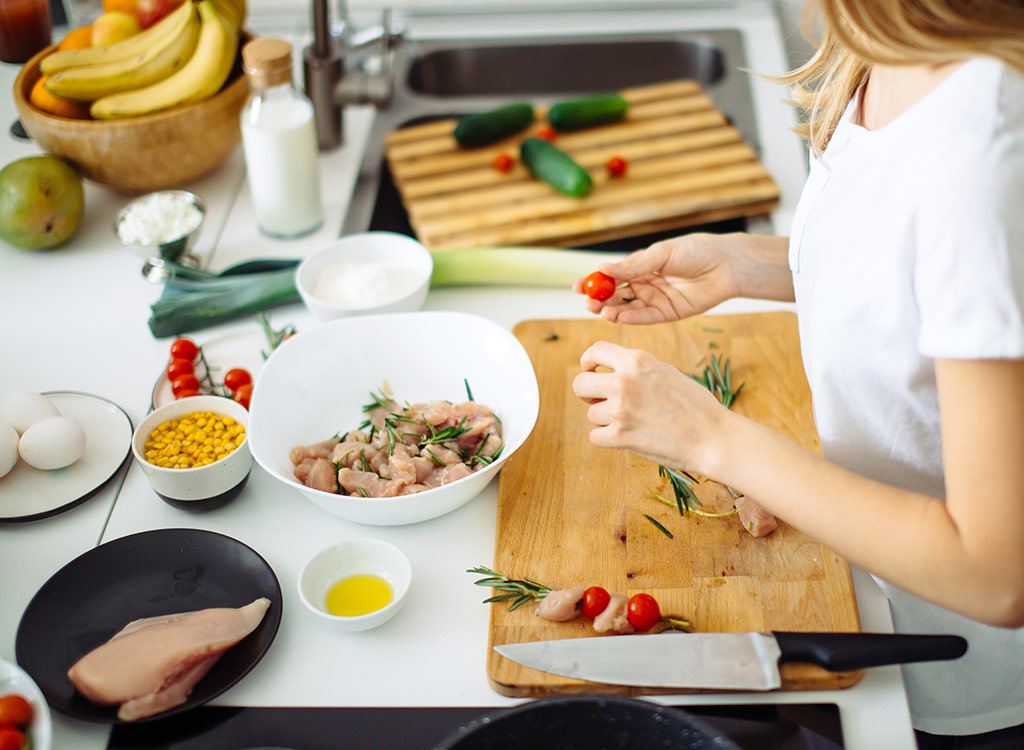
‘Tis the season for outdoor grills and picnics. While summer is the perfect time for lounging and noshing with friends and family, warm days are also the ideal breeding ground for some unwanted guests—bacteria and other microbes that cause foodborne illness.
According to the Centers for Disease Control, each year, approximately 48 million people suffer from foodborne illness caused by bacteria such as E.coli, Salmonella, and Listeria. And these pathogens can cause more than just an upset stomach, vomiting, and a few extra trips to the bathroom, says Barbara Kowalcyk, assistant professor of food science and technology at The Ohio State University and the co-founder of the Center for Foodborne Illness Research and Prevention. They may cause serious infections that can lead to hospitalization, especially among pregnant and postpartum women, older adults, and those with compromised immune systems. In some cases, foodborne illness has been linked to chronic conditions, such as irritable bowel syndrome (IBS) and reactive arthritis, that can affect the quality of life, says Kowalcyk.
With recent recalls of Romaine lettuce and eggs, it’s important to know the basics of how to sidestep pesky bacteria. While common sense rules when it comes to safe food handling (wash your hands!), here are 10 tips to avoid foodborne illnesses. And for more cooking advice and kitchen tips to protect your family’s health, subscribe to the Eat This, Not That! magazine—for a limited time, you can get 50 percent off the cover price!
Stay Away From the “Danger” Zone
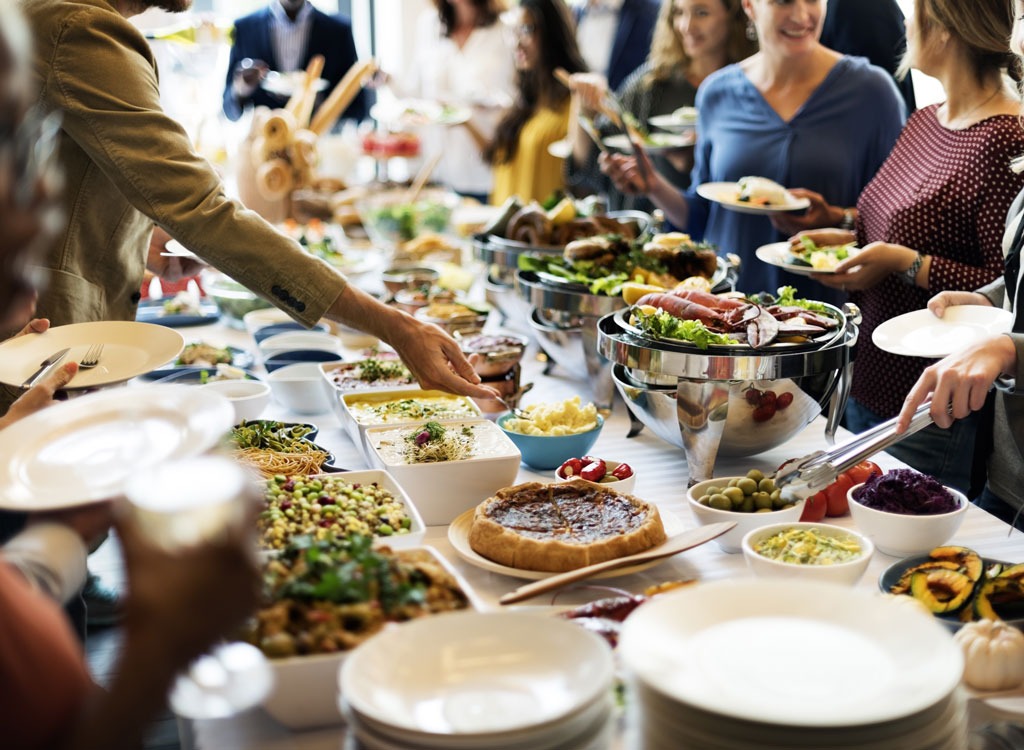
The first rule of safe food handling: Know the temperature danger zone. “The bacteria we’re concerned about can easily grow between 40°F to 140°F,” says Leslie Thompson, PhD, professor of food science and safety at Texas Tech University, so keep hot food hot and cold food cold. “Prepared foods that have been sitting out for more than two hours (such as at cookouts or parties) should be thrown out,” says culinary nutrition expert Jessica Levinson, MS, RDN, CDN.
Be a Neat Freak
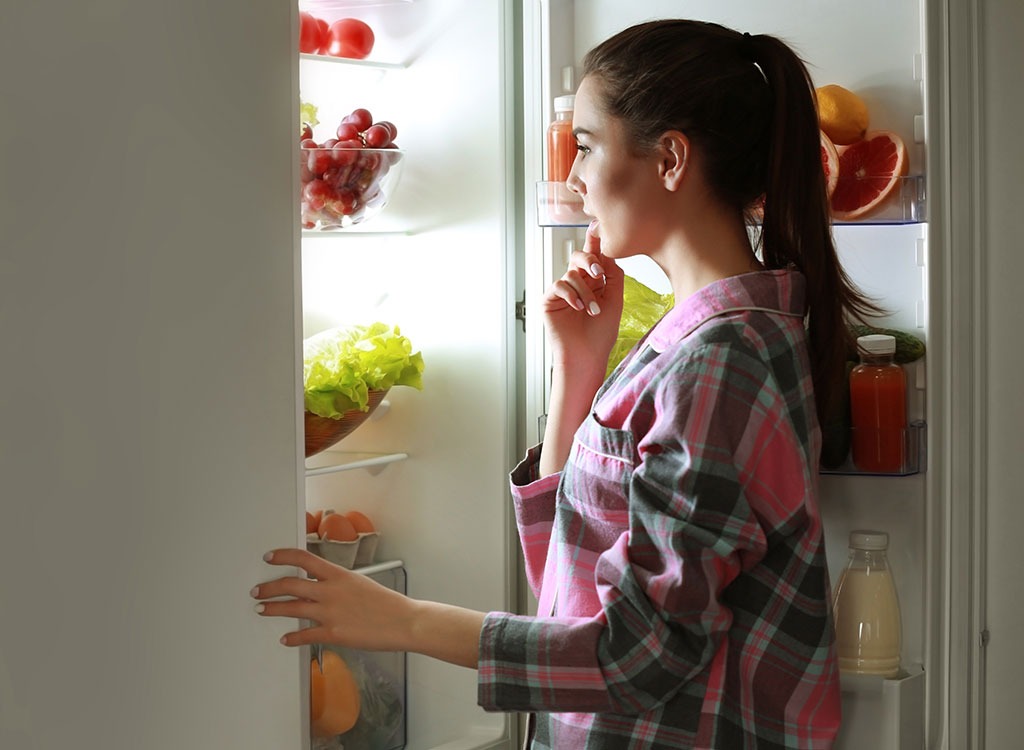
When it comes to cooking, it’s OK to be a little OCD. Thompson recommends washing your hands and cleaning cooking surfaces frequently to avoid cross-contamination, especially after touching high-risk foods like raw meat, poultry, and eggs. That goes for handling pet food and treats like pig ears, too. And don’t forget to clean your refrigerator regularly. “Some foodborne pathogens like Listeria can grow in refrigerated temperatures,” says Kowalcyk.
Use a Thermometer
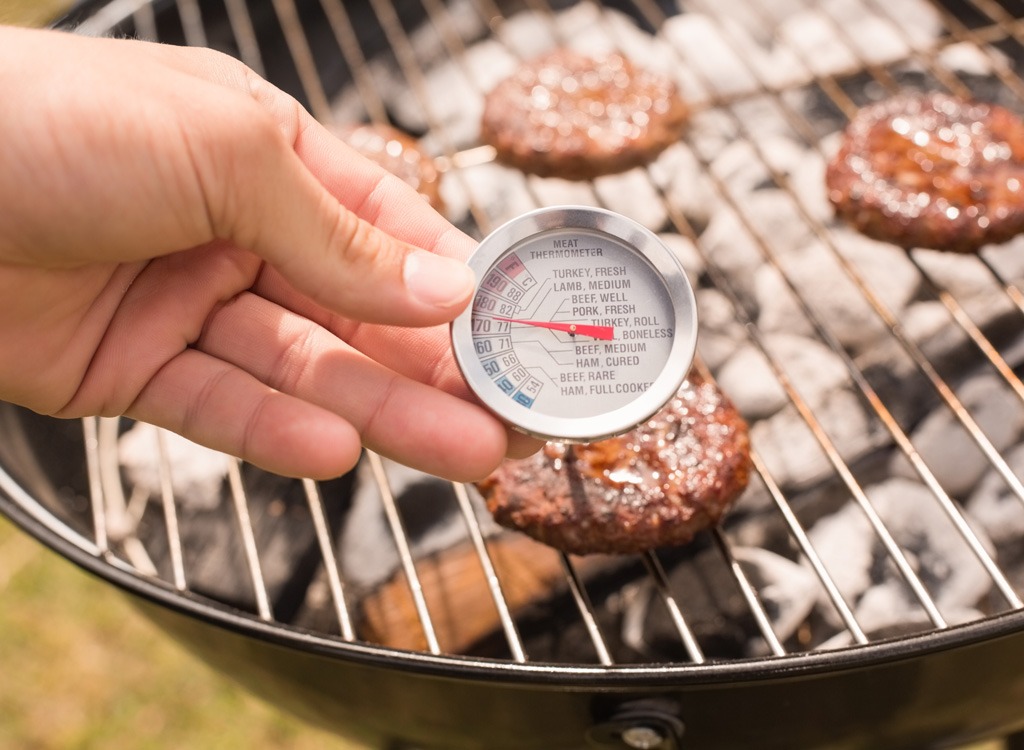
You know you should cook meat, poultry, and seafood to a specific temperature to kill troublesome bacteria, but how can you be sure it’s hot enough? Use a cooking thermometer. Kowalcyk recommends using a digital tip-sensitive thermometer over an old school dial model. You don’t have to calibrate it and it will give a more accurate reading, she says.
Cook ground meat to 160°F and poultry (including ground chicken and turkey) to 165°F. For pork and ham, cook to 145°F and be sure to let it rest for three minutes before eating. The meat continues to cook during that time so don’t skip it!
Segregate Your Fridge
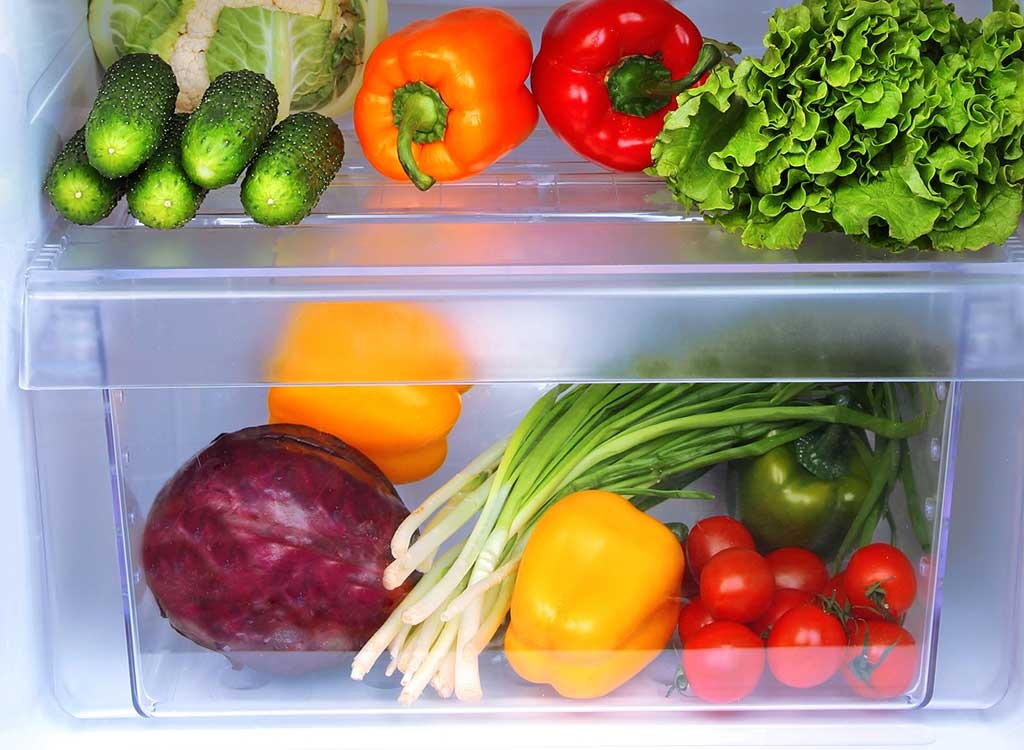
While you probably know to use separate cutting boards and utensils for produce, raw meats, and cooked food, cross-contamination can happen in your fridge too. “Raw meat, poultry, and seafood should be stored on the bottom shelf of the refrigerator, ideally in a container to protect other items on the shelf from drips,” says Levinson. “Fresh, ready-to-eat foods such as fruits and vegetables should be stored in produce drawers or on shelves above raw meats to prevent the risk of cross-contamination.”
Don’t Rinse Your Meat
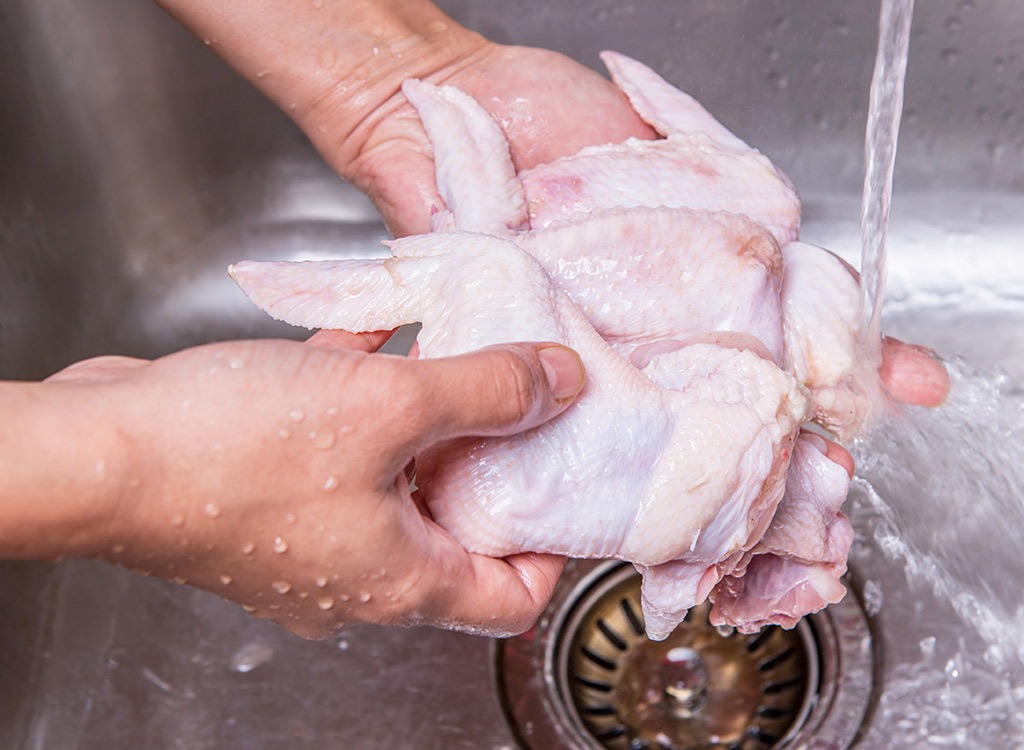
While it might seem like a good idea, rinsing your meat or poultry before cooking is a no-go. “Red meat doesn’t need to be rinsed,” says Thompson. “If you do rinse poultry, any contamination that was potentially on that poultry is now in your sink. You need to clean and sanitize the sink and any surface it may have touched.”
Wash All Your Produce
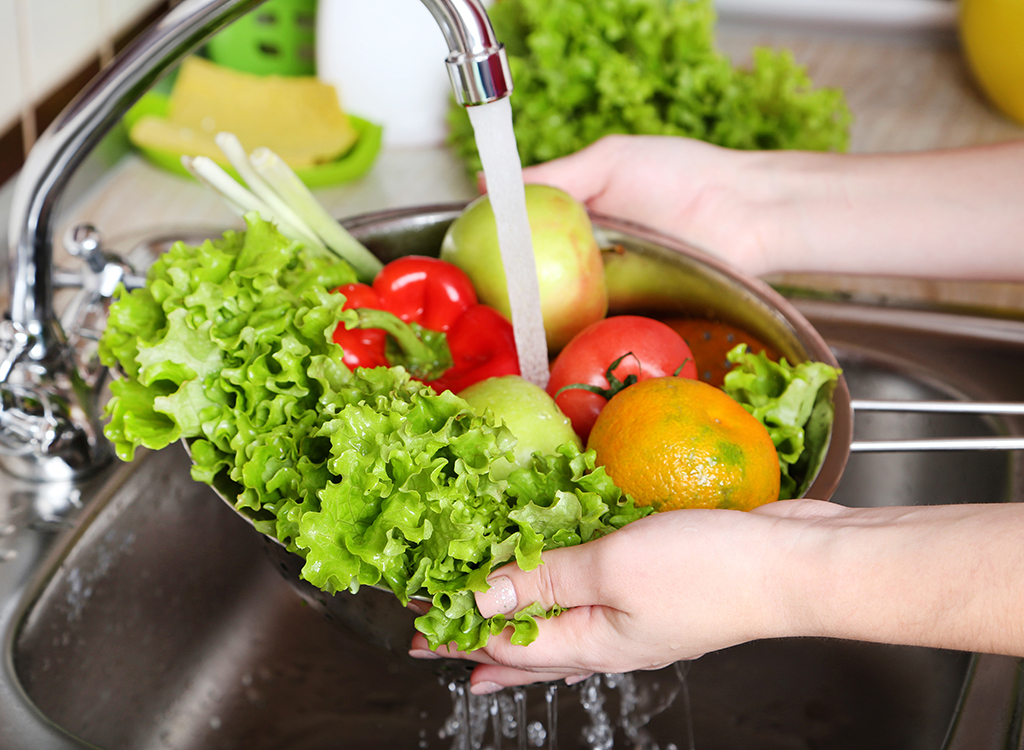
Fruits and veggies are often eaten raw, which makes them likely carriers for bacteria. “Food is grown out in the environment and there are all sorts of things that can increase the risk of foodborne pathogens—soil, animals passing through, run-off from other fields, and even fertilizers if they use manure and it’s not composted properly,” says Kowalcyk. “Contamination can happen during transportation and storage, too.”
Since skipping out on cooking leaves any potentially harmful bacteria intact, be sure to wash all of your produce before eating, even if you don’t plan on eating the skin. (Think melon and avocado.) Kowalcyk recommends using plain old water and a scrub brush right before you eat or prep the produce. And since bacteria like to hide in water, be sure to dry your produce with paper towels.
Choose Single Heads of Lettuce Over Bagged Salad Greens
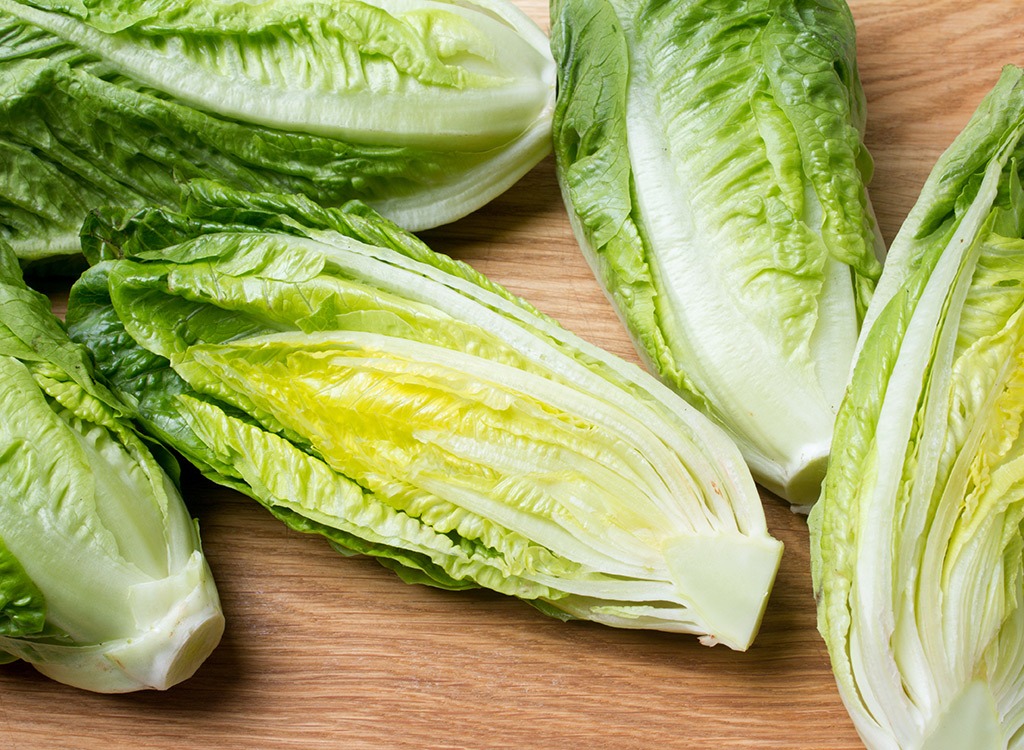
We get it—bagged salad greens are super convenient. But they’re also linked with large outbreaks of foodborne illness. “They put the greens in a huge vat of water. If one head of lettuce is contaminated, it can spread,” says Kowalcyk. Instead, she recommends buying a single head of lettuce, which has a lower risk of contamination.
If you do buy bagged greens, don’t rinse them before eating. Bagged greens are more likely to have broken leaves, which is an entry point for bacteria. If you wash your greens, you can spread any bacteria that may be present, according to Kowalcyk.
Toss Bruised or Broken Produce

According to Kowalcyk, bacteria sneak into fruits and veggies through cuts and tears. “When I get home and there’s a torn leaf in my lettuce, I discard it. If there’s a bruised tomato, I get rid of it,” she says. Better to be safe!
Cool Your Leftovers Before Storing
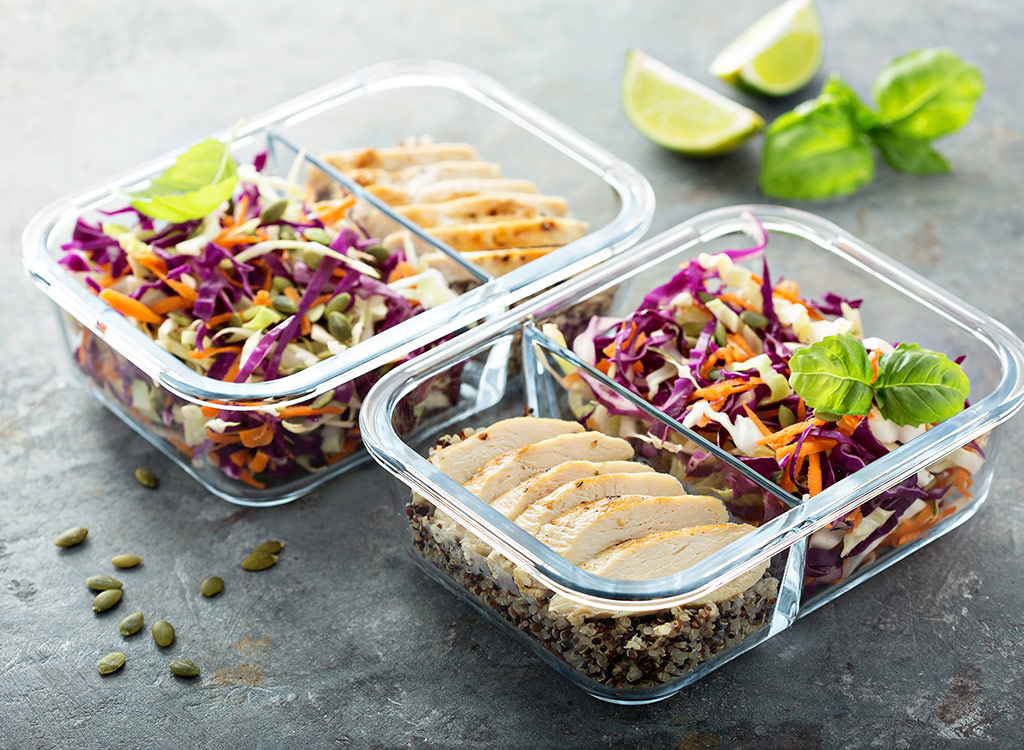
You meal prep like a boss on the weekend but should you immediately refrigerate or freeze your food? “If you make a stew and it’s 180 degrees, you don’t want to put that directly into the fridge or freezer because it unnecessarily raises the temperature,” says Thompson. “As long as it’s above 140°F, it’s not going to support the growth of microbes.” Let your food release some steam, but once the temperature dips below 140°F, cool it down.
Beware of Sponges and Dishcloths
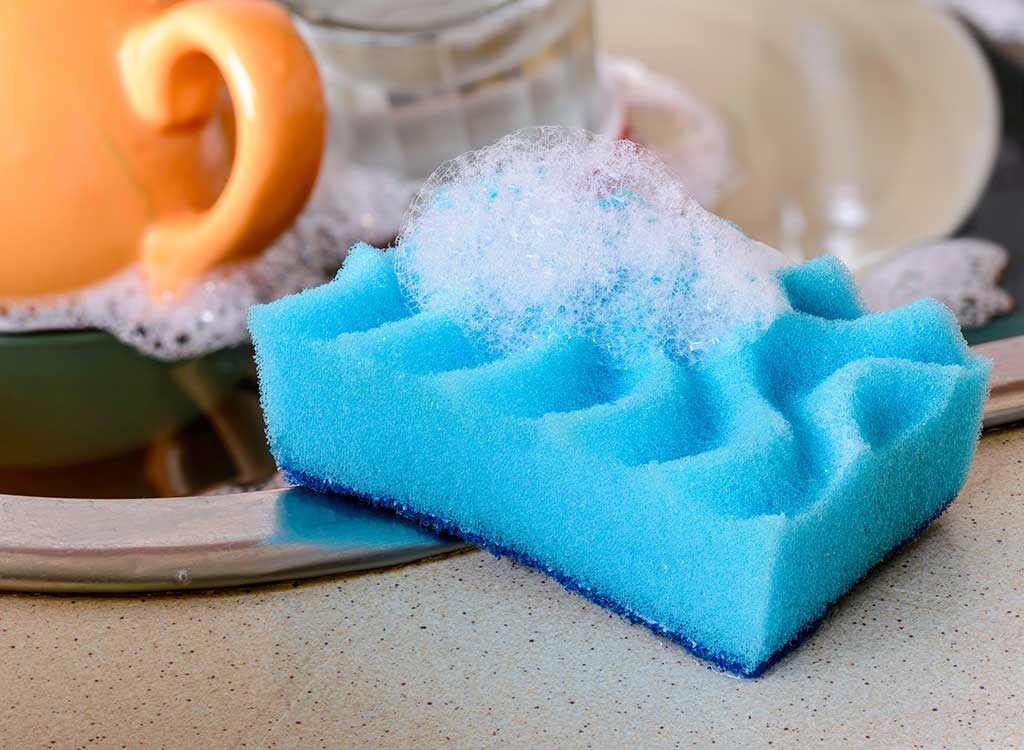
Sure, you usually use sponges and dishcloths to wash dishes and clean your kitchen but these can be breeding grounds for microbes, says Thompson. Change rags frequently and wash them in a diluted bleach solution. Make sure they dry completely. Since bacteria love moist sponges, Thompson suggests using a quick-dry scrub brush instead.








